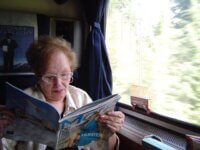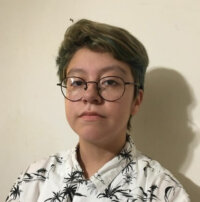I recently attended a reception at a new art gallery in the city of Vallejo. The gallery, El Comalito Collective, promotes under-represented artists of all genres, who for reasons of race, socio-economic status, sexual orientation, gender, or religion have not had opportunities for expression. The “comalito” in the gallery’s name refers to the griddle used to heat tortillas, to bring the family together and provide sustenance. I like this metaphor.
This particular exhibit featuring the work of female artists drew a stimulating and diverse audience response to the visual messages of political oppression, social conflict, cultural tradition, and the humor and beauty of life. The exhibit successfully fulfilled the gallery’s mission of lighting a fire that energizes the community. Yet art in public spaces can also divide and cause upset.
In Sonoma Valley, there are a couple of ongoing art related debates. One concerns the aesthetic appeal of the brightly painted buildings along Highway 12 in Boyes Hot Springs. As part of a redevelopment loan program, businesses can apply for funds to spruce up building facades with new signage and paint jobs. So far, La Tienda Iniguez, Armando’s Auto Repair, La Michoacana, Plain Jane’s, and El Brinquito have participated. However, the color palette has changed from the off-white, beige, brown, and grey of yesteryear to Technicolor. This has sparked equal parts of delighted support and horrified rejection. The issue recently reignited with the addition of the large chicken piñata adjacent to El Brinquito Market, which is known for its delicious barbequed chicken. One would think that physical improvements and creative expression reflective of the area would garner community support, but differences in artistic taste have burned the tortilla.
Another art dispute concerns the proposal by the Sonoma League for Historic Preservation to place a statue of General Mariano Guadalupe Vallejo in Sonoma Plaza. Currently there is only one monument in the northeast corner commemorating the Bear Flag Rebellion. Despite acknowledgment that General Vallejo as the founder of Sonoma merits recognition, opponents argue that it will set a precedent for additional requests for statues in the Plaza.
I can attest to that. When I served on the city’s Cultural and Fine Arts Commission in the early 90’s, a member of one of Sonoma’s Sister City committees wanted to place a statue of a hero from that country in Sonoma Plaza. It certainly took diplomacy to decline that request without offending our international friends. Perhaps General Vallejo would be more appropriately placed at the Barracks or at his very own home off Spain Street; however, those are state park properties and not under the purview of the city council. Expediency to place this art piece seems to have outweighed choosing a more suitable location.
Art and artists are difficult to define, subject to cultural influence and personal preference, just like some people have a taste for corn tortillas, and others prefer flour. Some like statues of forefathers, and some favor an homage to poultry. These pieces may provoke or please, but those are normal responses to art, which generate dialogue, education, and inspiration. A bit of controversy might not be a bad thing. The “comal” is hot.






Be First to Comment